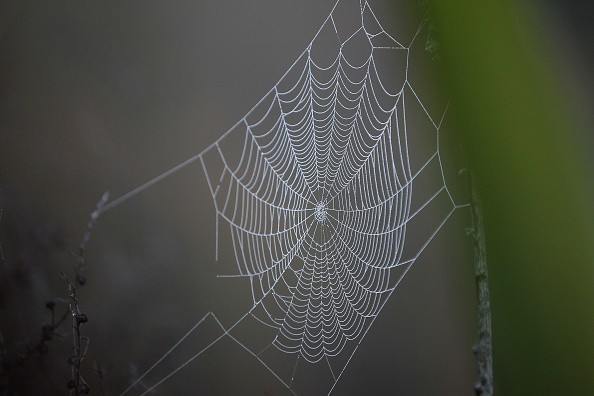Spiders depend quite importantly on touch to sense the world surrounding them. Their bodies and legs are enclosed in tiny hairs and slits that can differentiate between dissimilar kinds of vibrations. The blundering of prey into a web makes a very distinct vibrational clamor from another spider coming after, or the thrilling of a breeze, for instance.

Spider's Canvas
Each strand of a web makes a contrasting tone. Some years ago, experts converted the three-dimensional structure of a spider's web into music, partnering with artist Tomás Saraceno to produce an interactive musical instrument, called Spider's Canvas.
Now the team has refined and built on that former work and included an interactive virtual reality integrant to give people the access to enter and have an interaction with the web. The team says this research will not only assist them gain a better understanding of the three-dimensional architecture of the web of a spider but may even help them have a piece of knowledge of the vibrational language of spiders.
Vibrating Strings
Engineer Markus Buehler of MIT said: "The spider lives in an environment of vibrating strings. They don't have good sight, so they sense their world through vibrations, which have frequencies that are different."
When you think of the web of a spider, you most possibly think of the web of an orb weaver which is flat, round, with radial spokes all over which the spider builds a spiral net. Many spiderwebs, though, aren't of this kind but constructed in three dimensions - like tangle webs, funnel webs, and sheet webs, for instance.
The Tropical Tent-web Spider
To examine the structure of these kinds of webs, the team accommodated a tropical tent-web spider (Cyrtophora citricola) in an enclosure that is rectangular and allowed it to fill the space with a three-dimensional web. Then they made use of a sheet laser to brighten and make high-definition images of 2D cross-sections of the web.
An algorithm that is specially developed then attached the 3D architecture of the web from these 2D cross-sections. To change this into music, distinct sound frequencies were assigned to different strands. The notes that were generated were played in patterns based on the structure of the web. They took a scan of the web while it was being turned, converting each step of the process into music.

3D Printing
This implies that the notes transform as the structure of the web transforms, and the person listening can hear the process of the construction of the web; possessing a record of the step-by-step process implies they can also get a better understanding of how spiders build a 3D web in the absence of support structures - a skill that could be applied in 3D printing, for instance.
The researchers said that Spider's Canvas permitted audiences to hear the music of the spider, but the virtual reality, in which users can go in and play strands of the web themselves, includes a whole new layer of experience.
Related Article : Giant 1,000-Foot Spider Web Blankets Entire Lagoon In Greece
For more news, updates about spider webs and similar topics don't forget to follow Nature World New!
© 2025 NatureWorldNews.com All rights reserved. Do not reproduce without permission.





